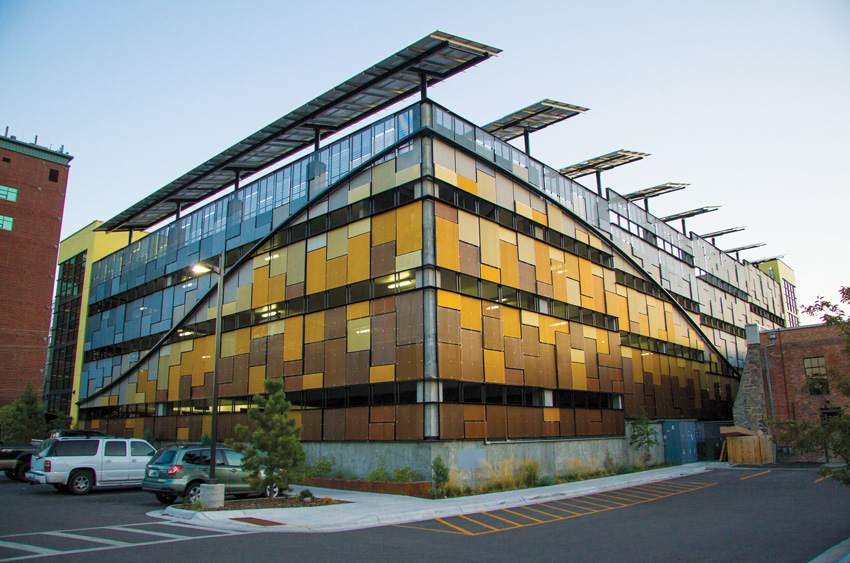Designing Green: The Seen and the Unseen
Learning Objectives:
- Identify and recognize the significance of different aspects of green and sustainable design working together to create a holistic solution.
- Assess the health and wellness aspects of green rating programs and ways that they can be incorporated into building designs.
- Explain the multiple aspects of energy conservation and efficiency in buildings that contribute to better green design.
- Determine ways to incorporate green and sustainable principles into selected buildings as shown in case studies.
Credits:
This course is approved as a Structured Course
This course can be self-reported to the AANB, as per their CE Guidelines
Approved for structured learning
Approved for Core Learning
This course can be self-reported to the NLAA
Course may qualify for Learning Hours with NWTAA
Course eligible for OAA Learning Hours
This course is approved as a core course
This course can be self-reported for Learning Units to the Architectural Institute of British Columbia
The movement for green and sustainable building design continues to grow and pick up steam for multiple reasons that operate totally outside the realm of politics. Building owners recognize real financial and personnel advantages with green buildings and are coming to expect that their design and construction teams have the knowledge and expertise to create energy-efficient, environmentally sensitive, and healthy buildings as part of their normal design process. Accordingly, architects and other design professionals have become better educated on how to produce and advocate for such designs, sometimes taking advantage of advanced computer software tools to help in the process. Similarly, construction professionals have developed standard practices or teamed with specialists to be sure they can provide green building work competitively. Concurrently, product manufacturers have invested heavily in finding ways to both operate in a sustainable manner and to create products that pass muster as green and sustainable too.

Photo courtesy of Accurate Perforating/Bret Hoekema
The successful design of green and sustainable buildings requires a holistic approach to balance different aspects of sustainability as identified by international programs and standards.
Pushing this movement along is the existence not only of energy codes and even the International Green Construction Code (IgCC), but also a number of voluntary standards and rating systems to help identify just how green or sustainable a building really is. The U.S. Green Building Councils’ LEED program is probably the best-known one, but there are others being used too. The WELL standard is recognized by LEED but focuses on the health and well-being of occupants in more categories and in greater detail. Passive House is raising the bar on energy efficiency not only for single-family residential buildings but also for multifamily construction—its fastest-growing area of certification. And the International Future Living Institute has developed the Living Building Challenge (LBC) which goes beyond “doing no harm” to being truly regenerative and contributing to a positive built environment in multiple respects. It includes 20 imperatives organized into seven “Petals,” all of which must be achieved in order to receive full LBC Certification. Separate certifications are also available for certain petals and for a net-zero energy building.
Regardless of the standard being followed, the challenge for design teams is not necessarily how to address any individual aspect of green or sustainable design, but rather, how to synthesize multiple needs into an integrated, holistic design. That can often take some trial and error attempts at different design combinations to determine an optimal balance of benefits without detracting from other sought-after characteristics. The development of different design iterations, commonly using computer modeling or simulations, has given rise to a 21st century “iterative design process.” Ideally, this process allows for several different design scenarios to be developed, first at a large scale or “massing” level, to compare the differences between them on environmental, energy, or wellness terms. Once a conceptual design is settled upon, then a more detailed analysis can take place where individual components can be studied to determine how to optimize each of them in relationship to overall design and other components. Finally, specifications for materials need to be coordinated with the design to maximize the green and sustainable qualities being sought for the materials that are used in the building.
With all of the above in mind, this course will look at several aspects of green and sustainable design, specifically with the idea of integration and optimizing design iterations, components, and specifications.
Notice

www.accurateperforating.com

www.archgrille.com

www.benjaminmoore.com/scuff-x

www.extechinc.com/techvent

ZIPSystem.com/R-sheathing
















